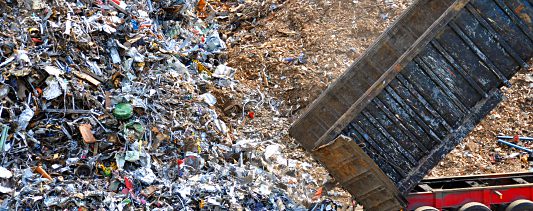Increasing amounts of waste are moving across EU borders for recovery or disposal.

SHIPMENTS are not just travelling between EU countries but outside those borders according to a new assessment from the European Environment Agency.
Ever more stringent and harmonised waste policies in the EU have led countries to transport more waste material elsewhere, for example if they do not have the facilities to recycle or dispose of particular types of waste. There are increasing demands for recyclable materials, within the EU and beyond, particularly in booming Asian economies.
The report points put that while trade of hazardous waste grew between 2001 and 2007, shipped volumes decreased in 2008 and 2009, probably due to the economic downturn, according to the report ‘Movements of waste across the EU’s internal and external borders’. Exports of waste plastics and metals picked up again after the economic downturn and exceeded the pre-2009 levels in 2011.
International trade in recyclable material is expected to continue to grow, driven by more recycling, growing global competition for resources and an increasing awareness of the value of waste. Trade in hazardous waste is also expected to increase, although the push here will come from a need to treat waste in specific facilities that are not available in all countries.
Over-all, the authors believe EU should put more efforts into waste prevention in order to become more resource-efficient and recommend encouraging new technologies and business models that generate less waste, or waste that is less hazardous.
“European countries are exporting more waste than ever,” said Jacqueline McGlade, executive director of the European Environment Agency (EEA). “The trade in non-hazardous waste can be seen as largely positive, as material is often transported to places where it can be better used. However, we should not lose sight of the bigger picture – in an increasingly resource-constrained world, Europe needs to dramatically reduce the amount of waste it generates in the first place.”
It is illegal to ship hazardous waste from EU Member States to countries which are not members of the Organisation for Economic Cooperation and Development. Old computers, home appliances and other electronic equipment should be collected separately under EU legislation.
However, the report estimates that between 250,000 tonnes and 1. 3 million tonnes of used electrical products are shipped out of the EU every year to West Africa and Asia, much of them falsely classified as ‘used goods’ although in reality they are non-functional. These goods may subsequently be processed in dangerous and inefficient conditions, harming the health of local people and damaging the environment.
The illegal waste trade seems to be growing, the report says, noting that the EU needs to intensify and harmonise inspection activities across the EU to combat illegal waste transfers.
HAZARDOUS & ELECTRONIC WASTE
• Exports of hazardous waste, which may be explosive, flammable, irritative, toxic or corrosive, grew by 131 % in the period 2000–2009, while the amount of hazardous waste generated in the EU increased by 28 % in the same period.
• Flows of hazardous waste into the EU countries, from other EU countries and also from outside the EU, almost trebled between 2001 and 2009, reaching 8.9 million tonnes.
• Hazardous waste can include fly ash from incinerators, contaminated soil, lead batteries, waste mineral oils and other chemicals. Most hazardous waste exports stay within the EU, going to neighbouring countries
NON-HAZARDOUS WASTE
• Exports of waste iron and steel, and copper, aluminium and nickel from Member States doubled between 1999 and 2011, while waste precious metal exports trebled and waste plastics increased by a factor of five.
• Increasing export volumes and rising prices are both contributing to the growing economic importance of waste exports. The value of scrap iron and steel exports out of the EU has increased by a factor of eight between 1999 and 2011
• Trade in waste wood has also increased steeply. Since 2003, EU imports of waste wood have exceeded exports.







